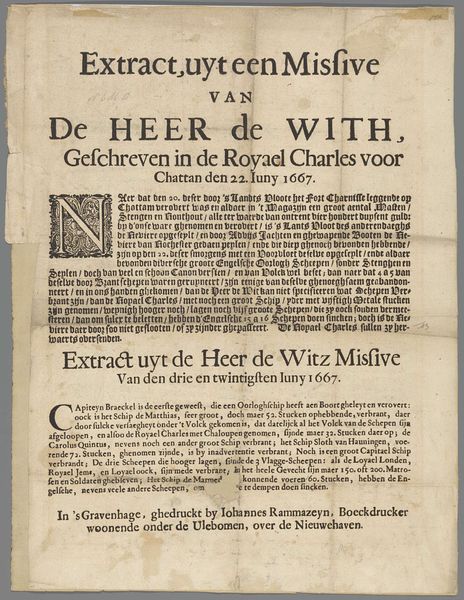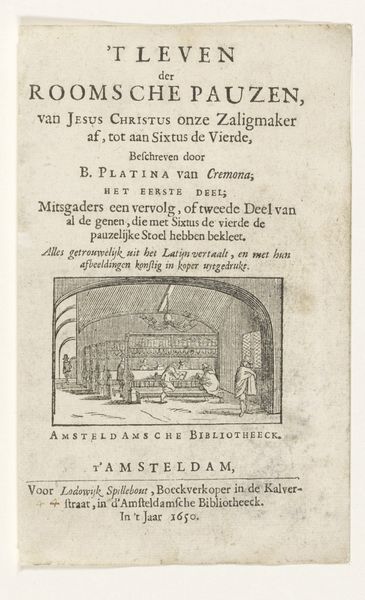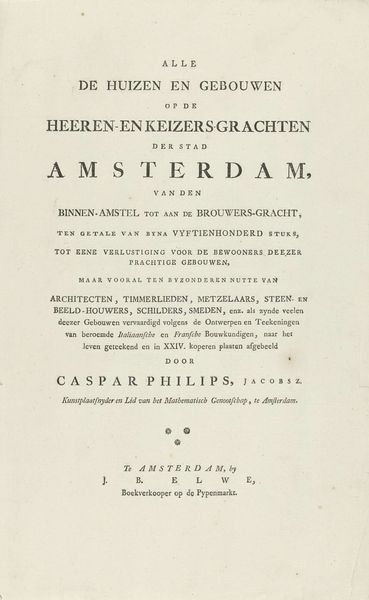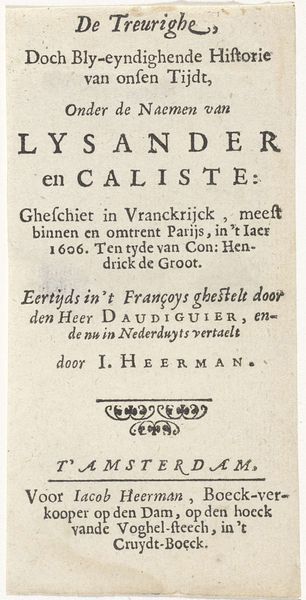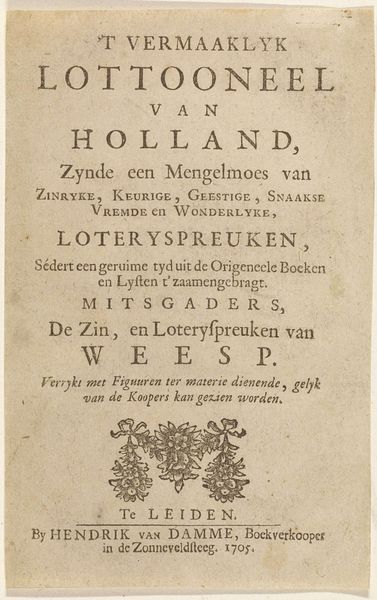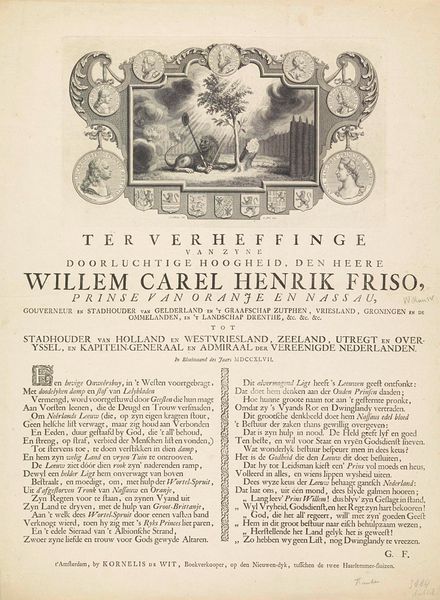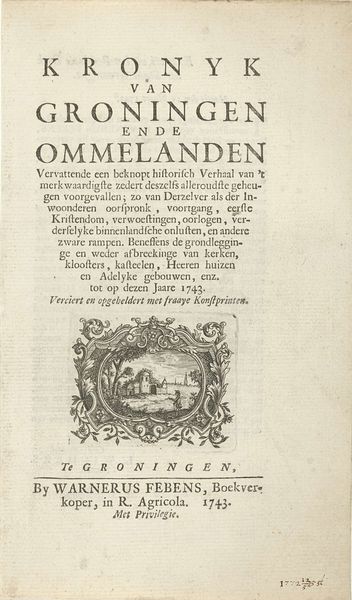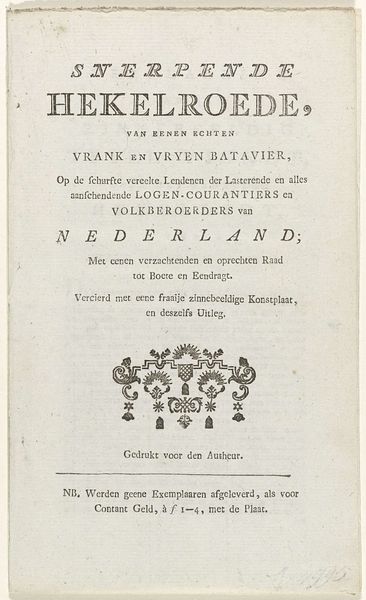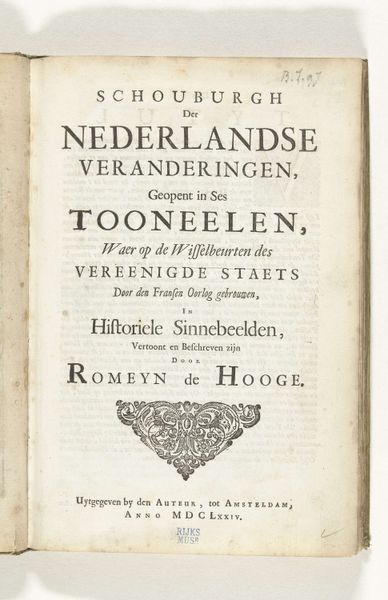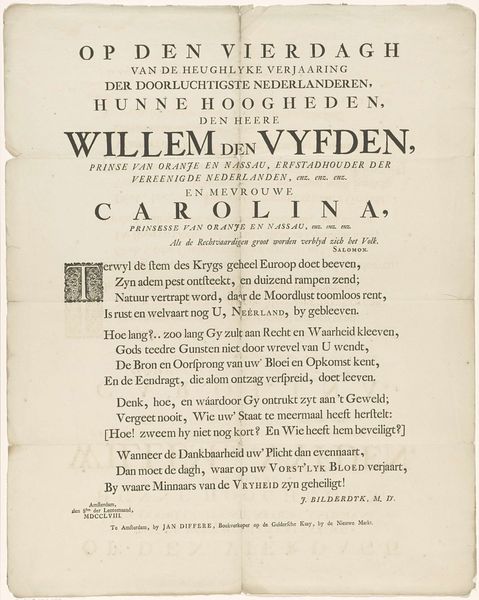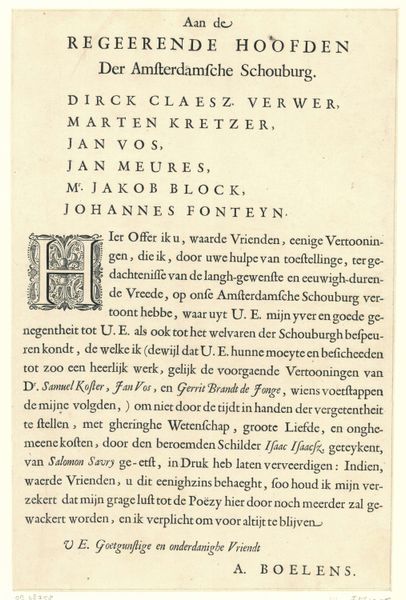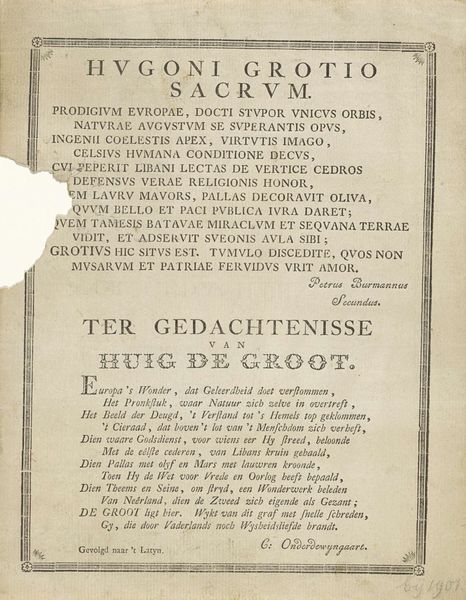
Gebed uitgesproken in de Hoogduitse Synagoge bij de verheffing van Willem IV tot stadhouder, 1747 1747
0:00
0:00
print, textile, paper
#
dutch-golden-age
# print
#
textile
#
paper
Dimensions: height 481 mm, width 382 mm
Copyright: Rijks Museum: Open Domain
Curator: Here we have “Gebed uitgesproken in de Hoogduitse Synagoge bij de verheffing van Willem IV tot stadhouder, 1747”, a printed textile from 1747. It's a Dutch Golden Age piece. Editor: It’s a very dense block of text, isn't it? It gives off a sense of officialdom, yet with the textile element, it almost softens that formality a little bit. Curator: Indeed. It was created, printed, and celebrated within the High German Jewish Great Church in Amsterdam to commemorate the election of William IV. What strikes me is the convergence of religious expression, political declaration, and its circulation as a printed object on paper—its materiality speaks to a wide dissemination of the new leadership’s legitimation. Editor: So, a very deliberate attempt to use public imagery and, essentially, propaganda to consolidate power through something as commonplace as a broadside? How do you see this reflecting the politics of the period? Curator: Absolutely. This print serves as a potent symbol of the complex negotiations between religious communities and state power in 18th-century Netherlands. The use of the printing press allowed the message to spread rapidly and widely to solidify Willem IV’s claim of Stadtholder. Furthermore, the very act of Jewish congregation and communal declaration in support of Willem signifies the importance of their participation to create political legitimacy. The emphasis here wasn't just the message, but the active involvement in spreading this declaration as both textile and paper product that tells us how images can produce agreement and consent. Editor: It is intriguing to think of the labor and material considerations in creating these, the scale of production reflecting how integral such propaganda was to managing social stability during this period. We also can note that a woman Eleke van Belkom printed it which may influence the reading of social context within art. Curator: That's very perceptive. Belkom’s publishing here would contribute, potentially, to understanding new methods by which political legitimacy was manufactured. Editor: I appreciate that added context—it really reframes how I initially viewed the work. Curator: Likewise, your emphasis on the textile work enriches my understanding of this artwork beyond its historical implications.
Comments
No comments
Be the first to comment and join the conversation on the ultimate creative platform.

